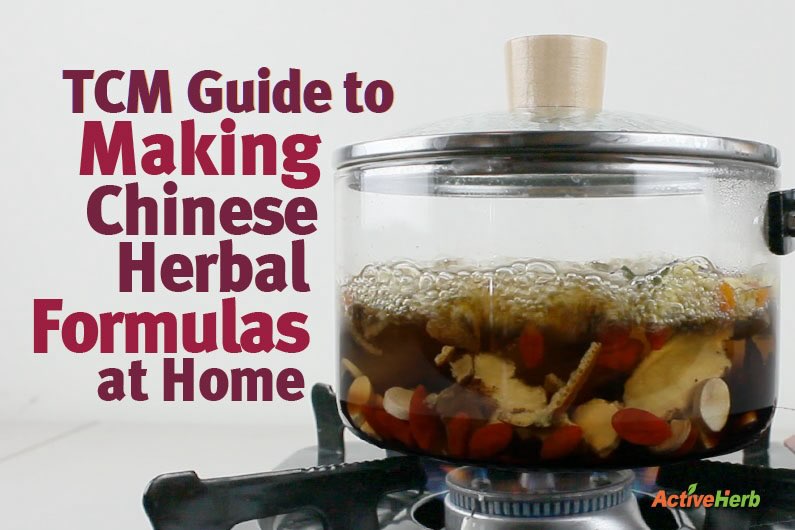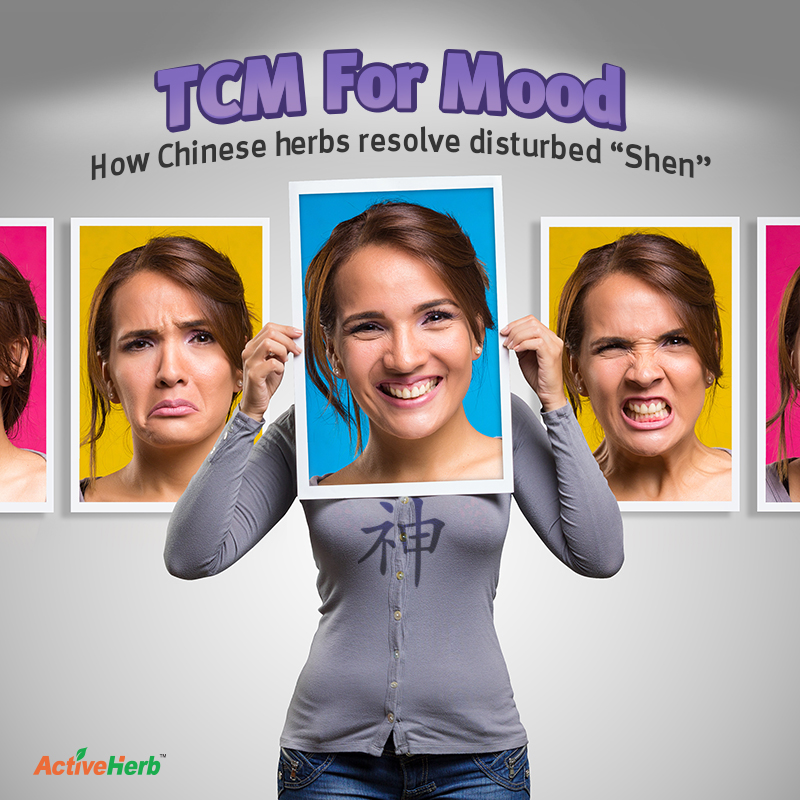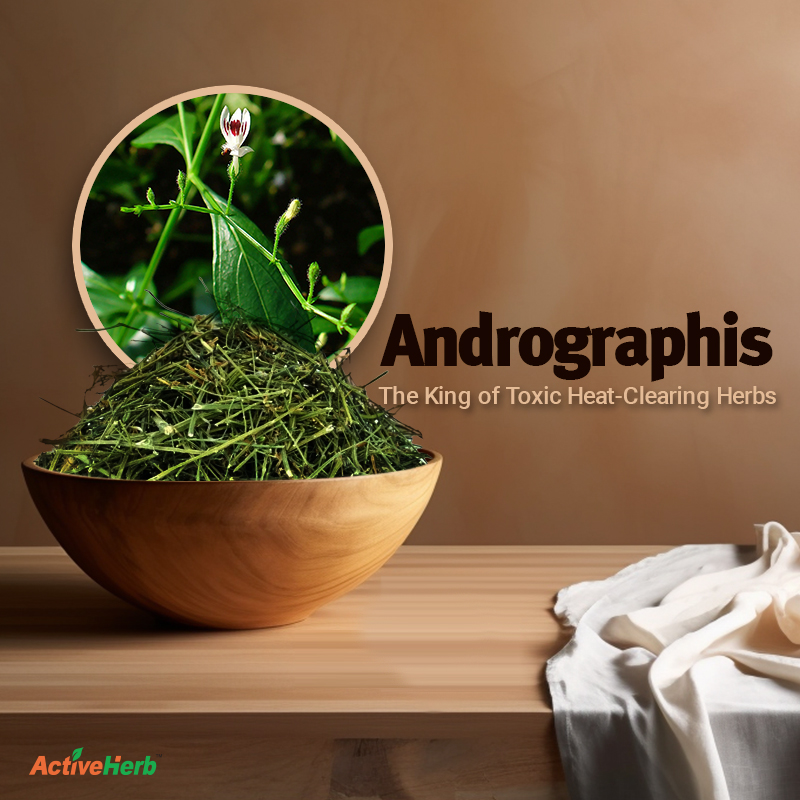A DIY Guide to Making Chinese Herbal Formulas at Home

There’s never been a better time than now to reap the benefits of traditional Chinese herbs and formulas. Tablets, capsules, and extract granules make it super convenient to experience the benefits of TCM. But for some folks, the folksy, old-school, traditional way is the most rewarding.
So, if you’re a kitchen alchemist, this intro guide to making your own Chinese herbal formulas at home is for you. Maybe you’ve already mastered the art of DIY sourdough bread. (At least there was one useful thing that sprung from the pandemic!). Kombucha? You can make that in your sleep!
If you like making tinctures, or just want to deepen your connection to your wellness routine, it’s time to get your hands dirty, and your house smelling like an apothecary. Making Chinese herbal formulas from scratch can be deeply rewarding and surprisingly doable.
Yes, it’s messy. Yes, it takes time. But so does anything worth mastering. And if you’re trying to save a buck while preserving the integrity of thousands of years of healing tradition, it will be worth it.
And don’t worry, despite rising tariffs on imported herbs, ActiveHerb still makes it affordable to get gold-standard, lab-tested bulk Chinese herbs delivered straight to your door.
The Art of Pao Zhi: TCM’s Traditional Processing Methods
Before a Chinese herb ever reaches your teapot, it usually goes through Pao Zhi—the ancient art of herb preparation. Pao Zhi isn’t just about making herbs shelf-stable. It transforms them.
In TCM, raw herbs can be too harsh, too cold, too toxic, or simply less effective. Through techniques like stir-frying, steaming, or soaking in wine, Pao Zhi is used to:
- Enhance the herb’s therapeutic action.
- Reduce side effects or toxicity.
- Change the herb’s energetic properties (e.g. make it warmer, less drying, easier to digest).
- Guide the herb to specific organ systems.
Here are some of the most common Pao Zhi techniques:
Stir-Frying (Chao)
Raw herbs are dry-fried or fried with honey, wine, vinegar, salt, or other ingredients. For example, stir-frying with honey can tonify the Spleen and moistens dryness.
Steaming or Boiling (Zheng or Zhu)
Used for herbs like Rehmannia (Shu Di Huang) to reduce harshness and boost nourishing properties.
Roasting (Duan)
Typically used to stop bleeding, roasting can “char” an herb like Zao Xin Tu (Terra Flava Usta) to increase astringency and make it less stimulating.
Wine-Processing (Jiu Zhi)
Soaking or stir-frying in rice wine is used to activate circulation and enhance delivery of the herb to the Blood and meridians.
Vinegar-Processing (Cu Zhi)
Directs herbs to the Liver channel or to enhance pain-relieving qualities.
In general, Pao Zhi makes herbs safer and more effective for its desired clinical function..
Why You Don’t Need to Worry About Pao Zhi With DIY Herbs
When you purchase bulk Chinese herbs from ActiveHerb, much of the hard work is already done. Herbs are either wild-harvested or sustainably farmed, properly identified, and processed according to TCM tradition.
Depending on the herb, that may include soaking, steaming, roasting, or honey-processing—all done for you by professionals using centuries-old methods. That means you get premium-quality herbs in their final form, ready to decoct at home.
Step-by-Step Guide: Brewing Chinese Herbal Medicine at Home
So you’ve got your herbs. Here’s how to get that therapeutic brew going, just like your local TCM practitioner would do it.
Step 1: Choose Your Formula
Start with a classic formula or get guidance from a licensed acupuncturist or herbalist. Need ideas? Browse ActiveHerb’s bulk herb formulas and single herbs to create your own blend.
Step 2: Weigh and Soak Your Herbs
Use a kitchen scale to measure your herbs according to your formula (usually around 10–15 grams per herb). Place the herbs in a ceramic or stainless steel pot and cover with enough water to submerge them by about an inch.
Let soak for 30–60 minutes. This helps release the herb’s compounds.
Step 3: Bring to a Boil, Then Simmer
Bring to a boil uncovered. Once boiling, reduce heat and simmer with lid slightly open for 30–45 minutes.
Pro tip: Some formulas require two separate decoctions combined at the end. Others call for short simmer times (delicate flowers) or long ones (dense roots or minerals). Read instructions carefully.
Step 4: Strain and Serve
Pour the decoction through a strainer into a clean jar or thermos. This is your first dose.
Some people drink it all at once. Others split it into 2–3 doses per day. Reheat gently, never boil again.
Step 5: (Optional) Reboil
Many formulas allow a second decoction using the same herbs. Just add less water and simmer again. Combine both decoctions if desired.
Step 6: Clean Up and Reflect
Yep, it’s smelly. But also kind of satisfying, isn’t it? You just brewed your own herbal medicine. Give yourself some credit.
Old-School Medicine, New-School Convenience
Making your own herbal formulas is more than just a return to tradition. It’s a chance to slow down, connect with your wellness routine and intentions, and appreciate the depth of Chinese medicine. And thanks to lab-tested herbs from ActiveHerb.com, you don’t have to worry about toxicity, mislabeling, or contamination.
Whether you’re an herbalist honing your craft or a curious newcomer, DIY herbal brewing is your ticket to the roots of Chinese medicine (no pun intended).
5 Classic TCM Formulas to Start With
Each made from single raw herbs available at ActiveHerb.com
1. Si Jun Zi Tang (Four Gentlemen Decoction)
Use for: Fatigue, poor digestion, low energy
Single Herbs:
- Ren Shen (Ginseng Root)
- Bai Zhu (White Atractylodes Rhizome)
- Fu Ling (Poria)
- Zhi Gan Cao (Honey-Fried Licorice Root)
2. Ba Zhen Tang (Eight Treasure Decoction)
Use for: Qi and Blood deficiency, especially postpartum or chronic fatigue
Single Herbs:
- Ren Shen
- Bai Zhu
- Fu Ling
- Zhi Gan Cao
- Shu Di Huang (Rehmannia Root, Prepared)
- Dang Gui (Chinese Angelica Root)
- Bai Shao (White Peony Root)
- Chuan Xiong (Szechuan Lovage Root)
3. Xiao Yao San (Free & Easy Wanderer)
Use for: Stress, PMS, mood imbalance
Single Herbs:
- Chai Hu (Bupleurum Root)
- Dang Gui
- Bai Shao
- Bai Zhu
- Fu Ling
- Zhi Gan Cao
- Sheng Jiang (Fresh Ginger)
- Bo He (Mint; use extra for peppermint tea!)
4. Yin Qiao San (Honeysuckle & Forsythia Powder)
Use for: Early-stage Wind-Heat colds with sore throat
Single Herbs:
- Jin Yin Hua (Honeysuckle Flower)
- Lian Qiao (Forsythia Fruit)
- Niu Bang Zi (Great Burdock Fruit)
- Bo He
- Jing Jie (Schizonepeta)
- Dan Zhu Ye (Lophatherum Stem)
- Lu Gen (Reed Rhizome)
- Jie Geng (Balloon Flower Root)
- Gan Cao
5. Shen Ling Bai Zhu San
Use for: Diarrhea, loose stools, poor appetite, fatigue
Single Herbs:
- Ren Shen
- Bai Zhu
- Fu Ling
- Zhi Gan Cao
- Shan Yao (Chinese Yam)
- Bai Bian Dou (Hyacinth Bean)
- Lian Zi (Lotus Seed)
- Yi Yi Ren (Job’s Tears/Coix Seed)
- Sha Ren (Amomum Fruit)
- Jie Geng
Have you ever made your own Chinese herbal formulas? Share your experience below.






